Some of you out there are really living the RV dream. Freedom. You pack up your RV, head out on the road, and drive where that road takes you. You detour when you want, stopping when something looks interesting. You’ve figured out the best ways to dump your tanks and fill up on water, and you’ve cracked the code on how to spend the night – from BLM lands in beautiful spaces to overnight campgrounds to Walmart parking lots. You drive with little planning and lots of independence. I envy you. I am jealous of you. I am not you.
And this article might not be for you.
Because this article is for the rest of us. The Planners. The ones that need to know – know where we’re going, what we’re seeing, the route we’ll drive, and the stops we’ll make. We need an agenda, a regimen, a schedule. We want to make sure we don’t miss the important things to see. We want to maximize our time. We don’t want to worry about finding a place to park for the night, or dumping our tanks, or running out of water. I’m a Planner. So, while I may look at those that aren’t Planners with some level of jealously, I also know that, at least for now, I have to plan.
So, if you’re like me, then this article is for you.
First, a little about me. Our 2018 LTV Unity FX (called Zephyr) is our very first RV. We picked it up in October of 2018 at Van City RV in St. Louis and immediately drove across the country, back home to the central coast of California. Did we plan for that trip? You betcha! I had a route laid out with some long days of driving and a few national parks along the way. We had reservations at campgrounds for every night. I planned for a Walmart stop at the start of the trip, to stock up on all of our supplies. And I had all the apps I thought I’d need to find whatever we’d need along the way. As a trip, it was very successful – you can even read about it in my first story on the LTV blog. As a plan? Well, as we like to say, no plan survives first contact. I had allocated an hour for that first Walmart trip – it took about 3 hours. And we had to stop at another one the next day to get more things. Our long days of driving were too long, with no ability to stop to see anything along the way (we really wanted to check out a Kansas winery – but no time to stop!). And then the weather came, pouring down rain as we spent our anniversary night at Dead Horse Point State Park in Utah, and totally ruining my dream of star photography over the canyon that night.
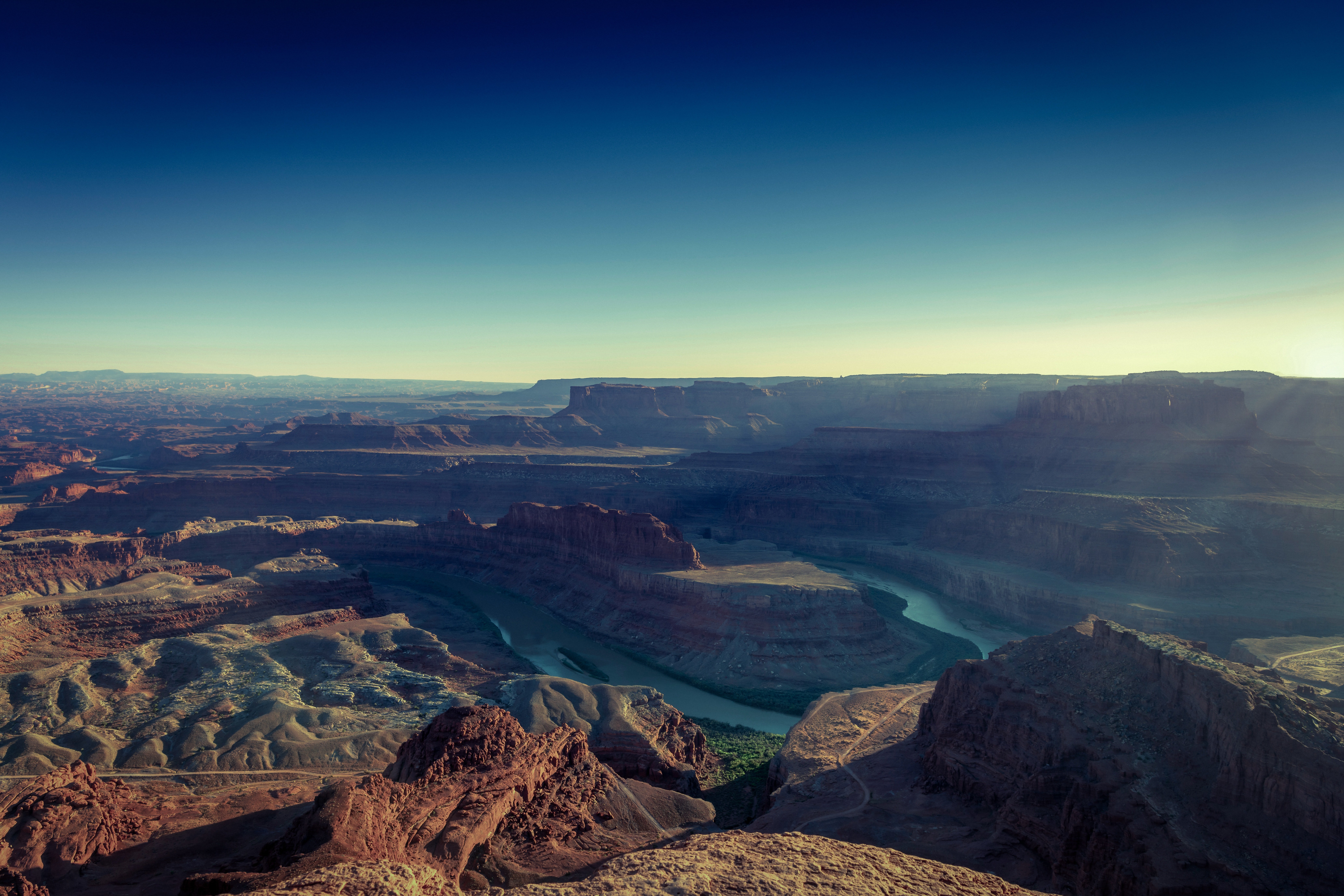
What I was hoping for…
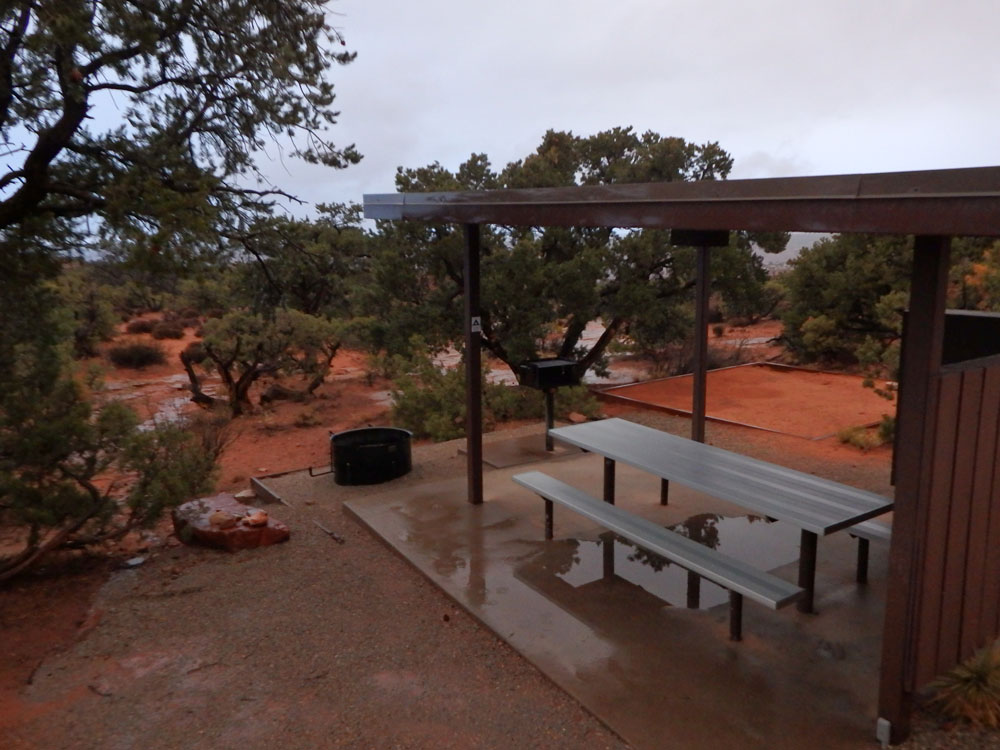
…vs what we got.
I came away from that first trip knowing two things: we love RVing (and our RV), and I needed to get better at planning. Specifically, RV planning. Because good RV planning, to me, embraces a little of that unplanned freedom I talked about earlier. You have to plan for unplanned time. But in all honesty, I haven’t put it to the test yet. Our trips so far have been local; staying at state parks or wineries, never travelling farther than a few hours from home. We’ve had a blast, traveling with our two dogs, Zeus and Odin (you can read Odin’s views on his adventures in multiple blog posts on our LTV Explorer page here). But 2020 was going to be different – we were going to take our first big trip. And while our original date of travel in May was postponed (obviously), the trip is still on for later this year. Which means it needs to be planned.
So, I’m going to walk you through my method for planning a future trip we hope to take to Oregon. Maybe you’ll pick up on some helpful tips. Maybe in your comments you can pass on your own tips to others. And for the Non-Planners out there… I hope you enjoy this article anyway!
Step 1: Where to Go?
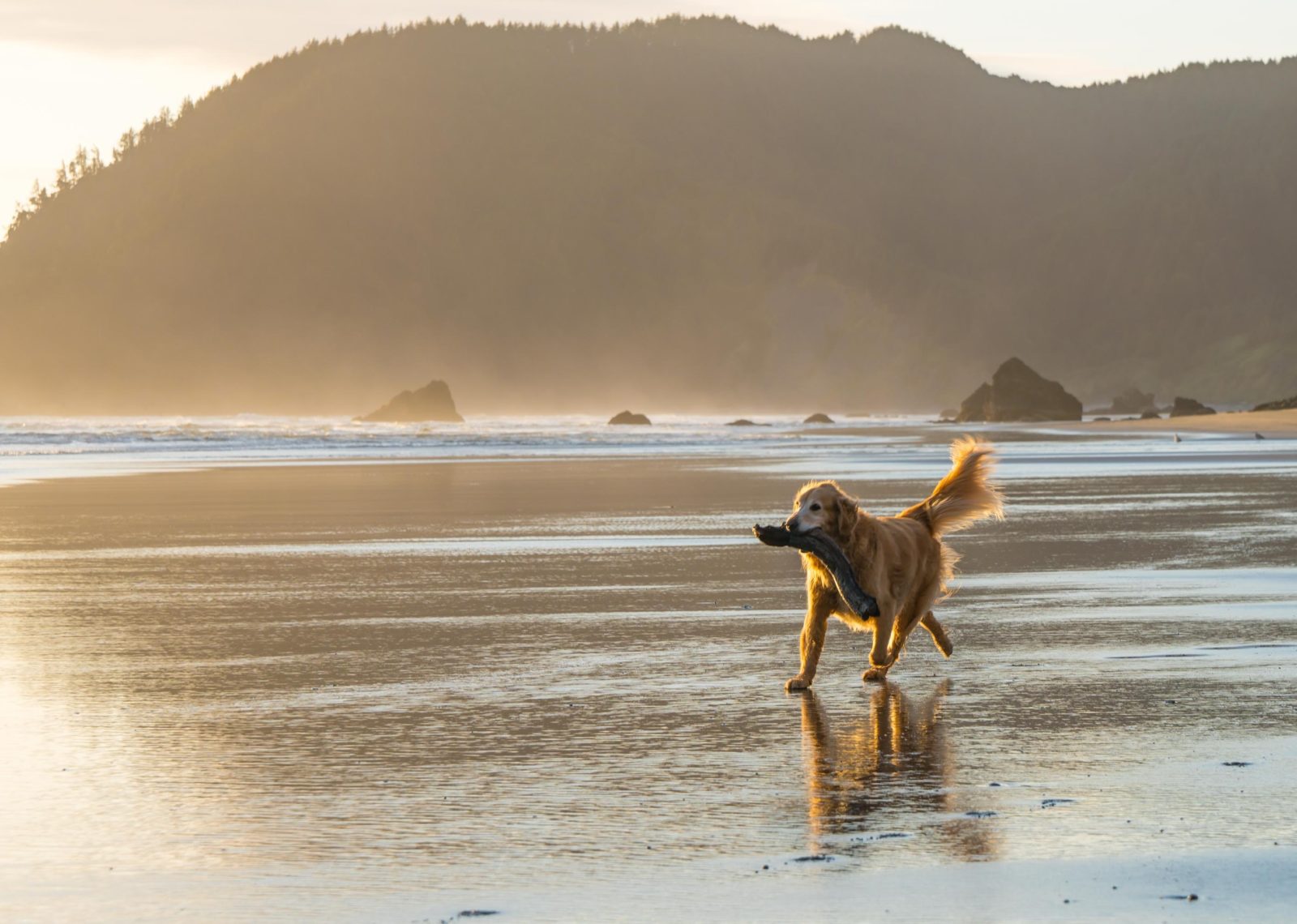
Photo of Gold Beach in Oregon by Paul Buffington on Unsplash.
For me, our first step started as an idea. We love our local wineries here, but we know there are also fabulous ones up in Oregon. We also know the Oregon coast is stunning. So, Step 1 was easy – where do we want to go? We want to go to Oregon. What do we want to see? Wineries and the coast. I think every good RV plan has to start with a goal. It could be a single destination or multiple sights to see. It could be an event you want to attend, or experiences you want to… experience. For us Planners, it’s the first step. And it’s the easy part, because now the planning really begins.
Step 2: Plan the Route
In Step 1, we decided we want to do wineries in Oregon and then the coast. In truth, there isn’t anything we need to see on the way there. We could just plan the shortest route to get to the start of our trip. But we learned on our first long trip that planning a route isn’t just looking at the shortest distance. Yes, Google Maps will show you can drive from our home to the Mt. Shasta area in about 8 hours. We’ve done that kind of drive before. Just get up early and start driving, only stopping for gas and lunch. But is that truly the best way to travel? For me, I would say no. RVing is about exploring, and if you plan correctly, you don’t need to make those long drives often. So set a limit – no more than X miles or Y hours on the road each day. For us, we plan for around 350 miles or 4 or 5 hours. For this trip, that puts us around the Napa Valley area. We’ve heard they have good wine there ?, so our self-imposed driving limit has already yielded a bonus, and we’ll start early to allow time to visit some wineries before settling in the first night. On the next day, we could push all the way into Oregon, but not with our limits. So, we’ll take time in the morning to maybe visit another winery, or sleep in, and then proceed to a halfway point just south of the Oregon border. Day 3 will find us driving into Oregon, and then we can spend two days in the Willamette Valley, enjoying their splendid wines. Next we’ll head to the coast, with a stop at the Tillamook cheese factory, because we love cheese and ice cream! Then it’s down the coast for a few days, crossing back into California to redwood territory, and then a final stop back in wine country, this time Sonoma, before heading home. Sounds good, right? The route is planned. Are we done? That’s silly. We’re only at…
Step 3: When to Go
For a long trip such as this, figuring out “when” to go is important. For many, the “when” might be dependent on other factors – job, family availability, etc. – that may determine when you can go and even for how long. But assuming you don’t have these restrictions, you are free to examine all the factors to come up with the best time to travel.
There’s obviously weather to consider. For this trip, we don’t want to go when it’s too hot, nor when it’s winter and too cold. Since coastal views are a big part of the trip, we want to avoid rainy seasons if we can. And we aren’t big fans of crowds, so we stay away from holiday weekends or large events.
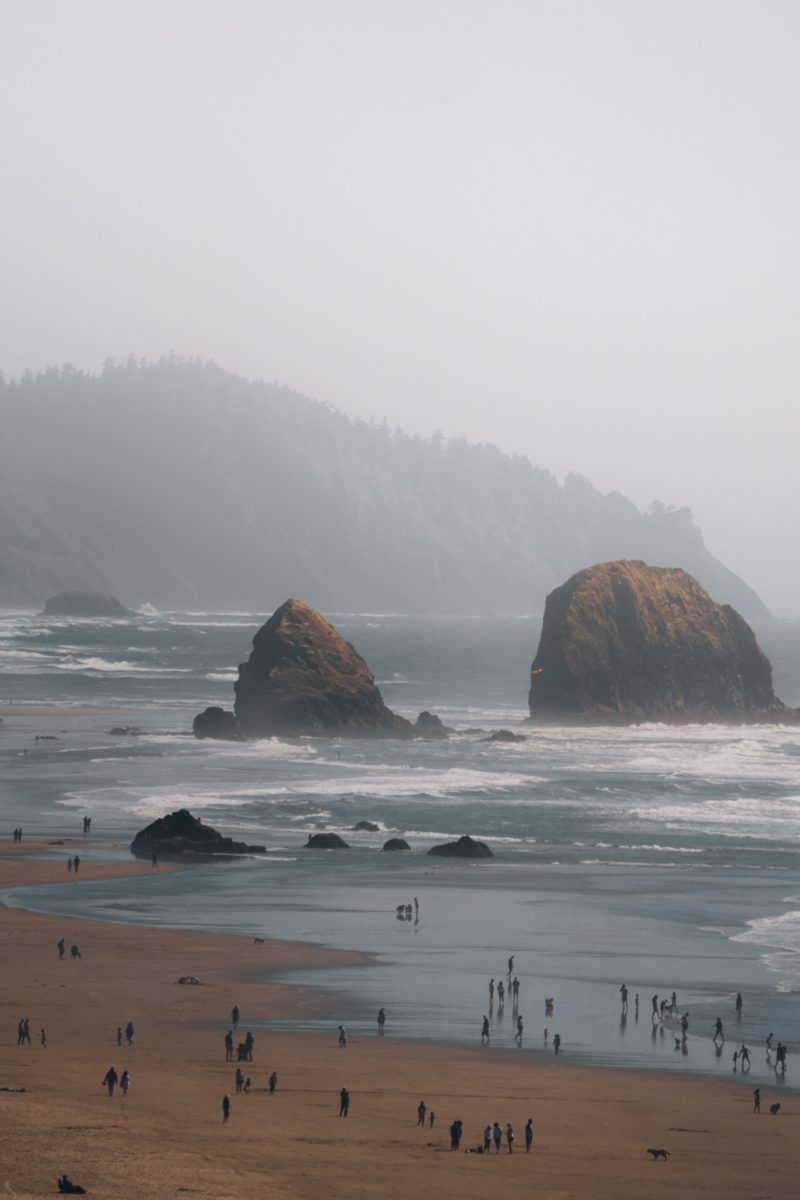
Photo of the Oregon coast by Cristofer Jeschke on Unsplash.
Basically, we’re like Goldilocks – we want it to be “just right”. To help with this, I turned to an old favorite – the Tourist Information Bureau (or Chamber of Commerce). Their websites can show yearly weather patterns or when there are events scheduled (either to go to or avoid). I get visitor information packets in the mail or download them from websites. These allow me to start fine-tuning the trip: Where are the best views along the coast? What are the best wineries to visit? Where do we find good hikes? Whatever your pleasure, this step is where you begin to figure out your details, and we all know…
Step 4: The Devil is in the Details
If we were like those “other” RVers, we could be done at this point. We have a general route, some things to see along the way, and that might be good enough. But not for us Planners. No, we need more. We already set a limit on our travel distances each day, which means now we need to find places to spend the night. As you know, RVs offer a lot of options. Unfortunately, there are also a LOT of RVs on the road (especially these days). So, for us Planners, we want to have the security of a reserved spot to rest our heads each night. But what kind of spot? This is where the true planning comes into it.
I like staying at state parks when I can, so I start my search there. Google Maps is a wonderful tool, so I search for parks within our optimal driving distance for the day and see what comes up. Then more internet searching. I go to sites such as RV Parky and Campendium for reviews of the spots we’re considering. I consider all the variables – is it close to our route? Is it close to something we want to see? Is it quiet? Does it have hookups? Are the pads big enough for an LTV? Are they too close together? A really great site I found is CampsitePhotos.com. They have photographs of individual sites in many, many campgrounds, so you can see exactly what each pad looks like.
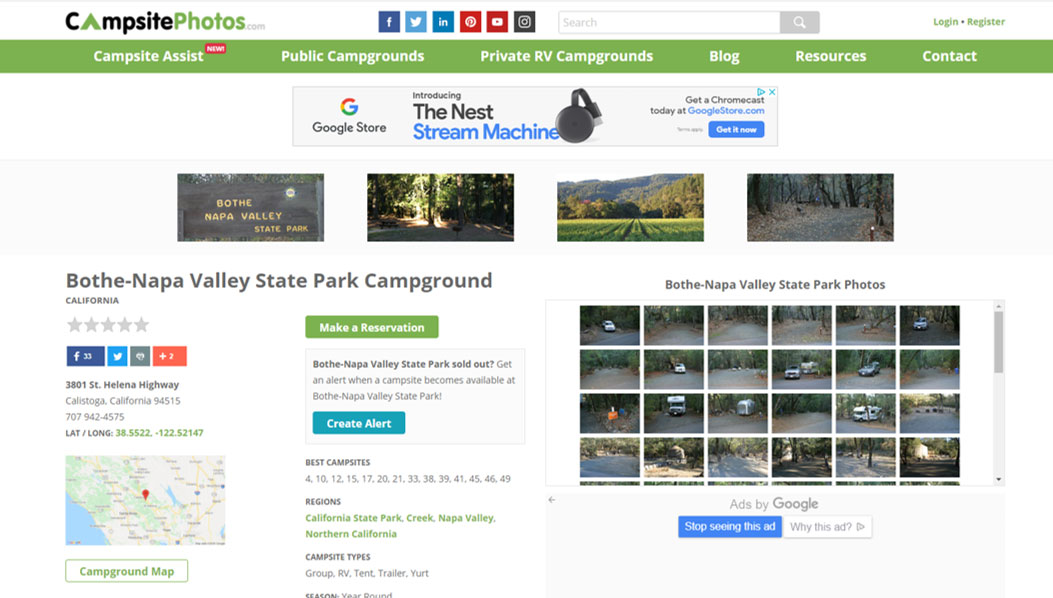
Everyone has their own wants and needs, so look for what’s important for you. For me, I found a perfect spot at Bothe-Napa Valley State Park, which is close to some good wineries and has good reviews. So, Day 1 was solved, and now I needed to do that for all the other days. We are Harvest Hosts members, which allows us to spend the night at wineries, so I searched their site for wineries in Oregon to make that portion of the trip easier (and cheaper!). For the Oregon coast, my search for state parks came up empty, so I moved on to private RV campgrounds. Close to Newport, my search found a REALLY nice one, and I decided to splurge a little. We’ll spend two nights at a luxury site right on the coast. We’ll have been on the road for a while, and we want to make sure we have time to stop and see the sights along the coast. And there’s always the weather unknowns. Two nights at the same place gives us some of that planned flexibility I was talking about. We can stay at the resort and walk to the beach, or we can drive up or down the coast to see some sights before coming back for the night.
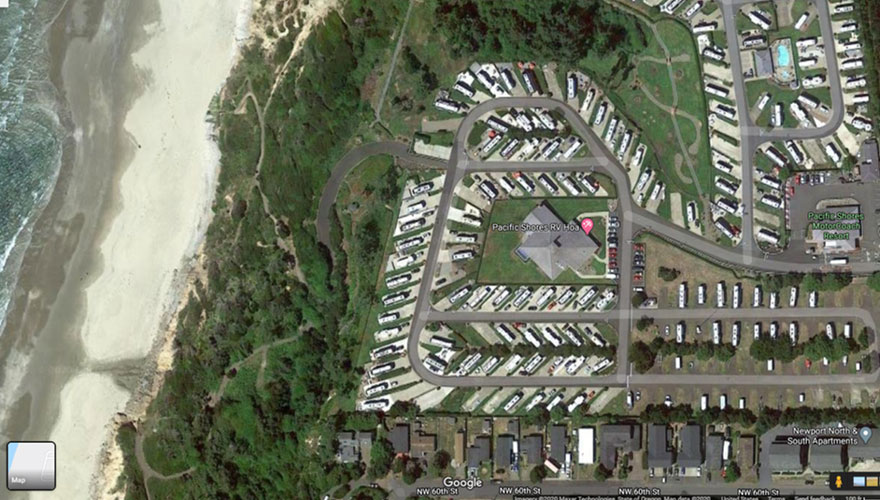
A satellite view gives you a good lay of the land.
And staying at this place also gives us another thing I plan for – dumping and replenishment. As I stated, we’re not expert RVers. That includes our ability to feel secure in multi-day boondocking. I worry about running out of water and/or filling up our tanks if we’re “off the grid” for too many days. So, I incorporate that into the plan. Some places, like our first scheduled stop, are dry camping. But the next night will be with hookups. That will carry us over the two nights at Harvest Hosts wineries, also dry camping, before the next night back with hookups and dumping. Right now, I try to go no more than 2 or 3 days before getting back to hookups. Can we go longer? I’m sure we can. I see many that do. But remember, planning is all about your own comfort level. For me, 2-3 days is my comfort level. In time, I’m sure that will get longer.
The rest of our trip is planned the same way, looking at Google Maps to see what’s in an area, looking at satellite view to see what the campground looks like, going to their website for more details (rates, availability, pictures), and checking out reviews online to see if it fits our needs.
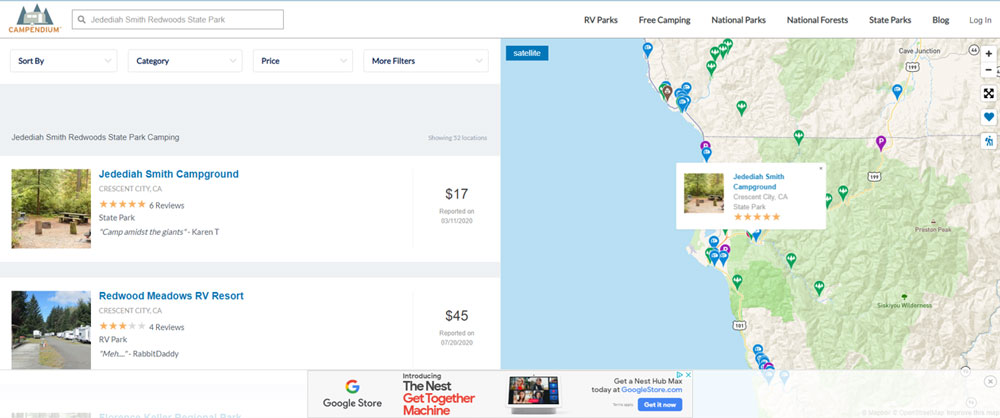
Online reviews are great to get opinions from others.
Sometimes the plan needs modifying. I had done all the planning to select the best state parks in California amongst the redwoods. But when I went to make reservations – no openings. So, back to looking for other parks or other campgrounds. Sometimes this could mean a bigger change, even to the route itself. I’d much rather make those changes now than at the end of a long day. That’s why I’m a Planner.
Step 5: The Most Important Step
Enjoy your trip! That’s really all that’s left now. I’ve done the planning I want. I have a route, I have reservations for each night, and we have some sights we want to see, but we’ve left room for spontaneity. I’m not sure what wineries we’ll visit in Napa or Oregon. We’ll start at one, and then ask for recommendations or see what looks nice. We have some planned spots to stop along the coast, but we’ll also keep an eye out for what looks pretty and pull over. We have no set time to be anywhere, so maybe we’ll sleep in some days. We’ll get gas when we need it (Gas Buddy app is great for this). We’ll pack up with food, but dine out if the mood hits us (and food selection for a long trip is probably a whole other post). I’ve found a happy medium now between planning and impulsiveness. To me, that’s what RVing is all about. It really is freedom, no matter how you do it. I hope you can find your happy place, because no matter how much or little we plan, we’ll always improvise, adapt, and overcome as needed. After all, we’re RVing!


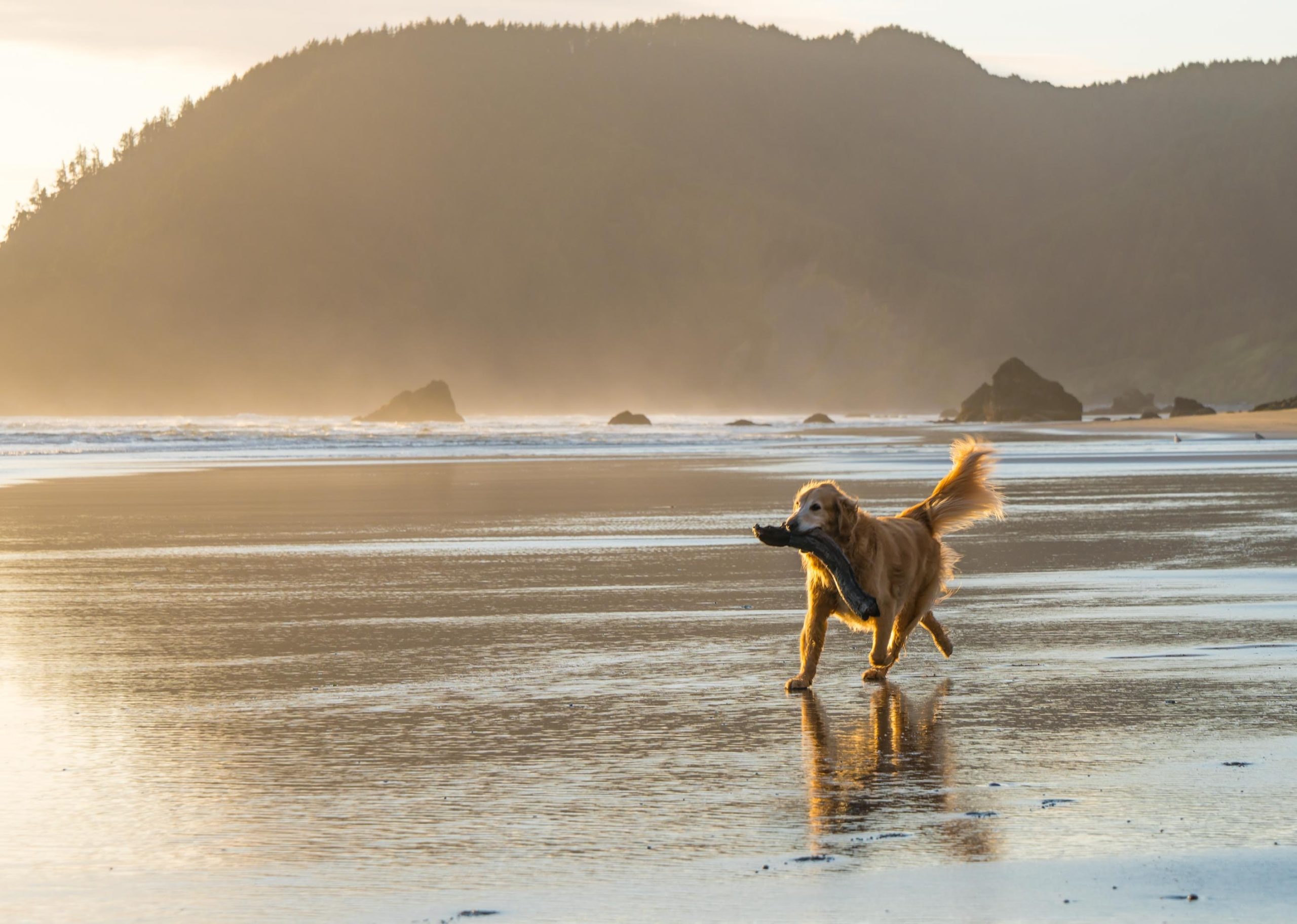
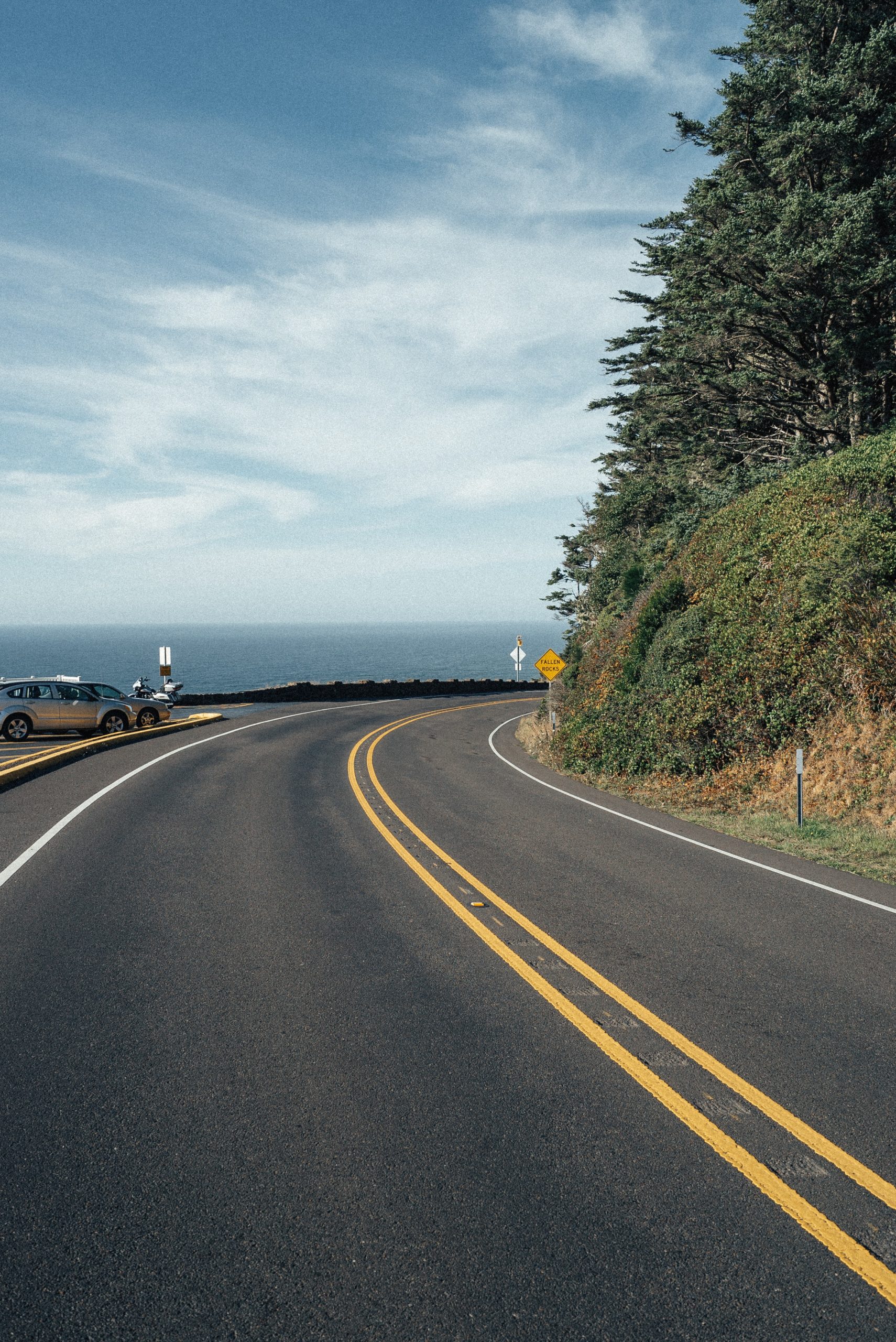
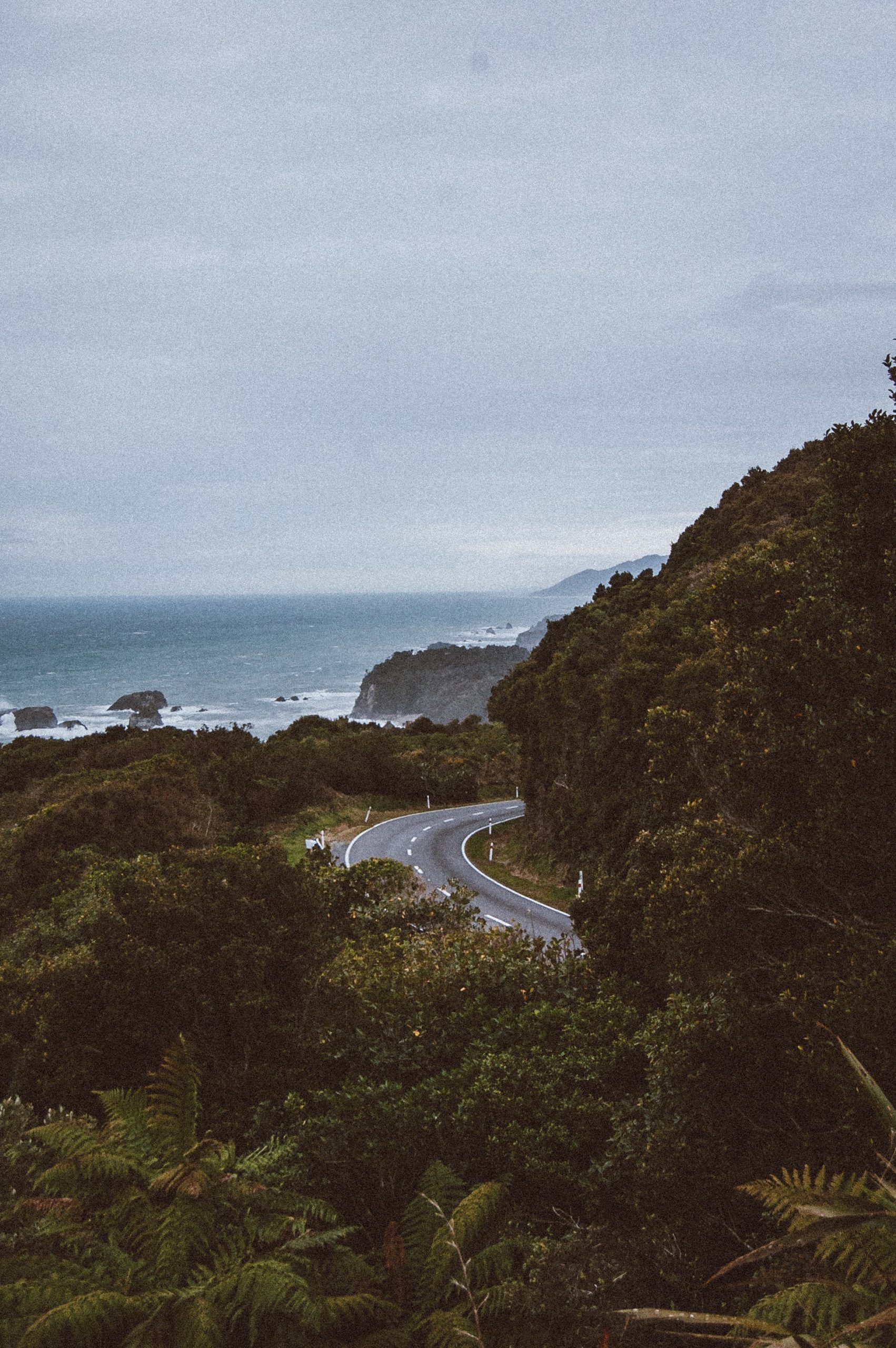
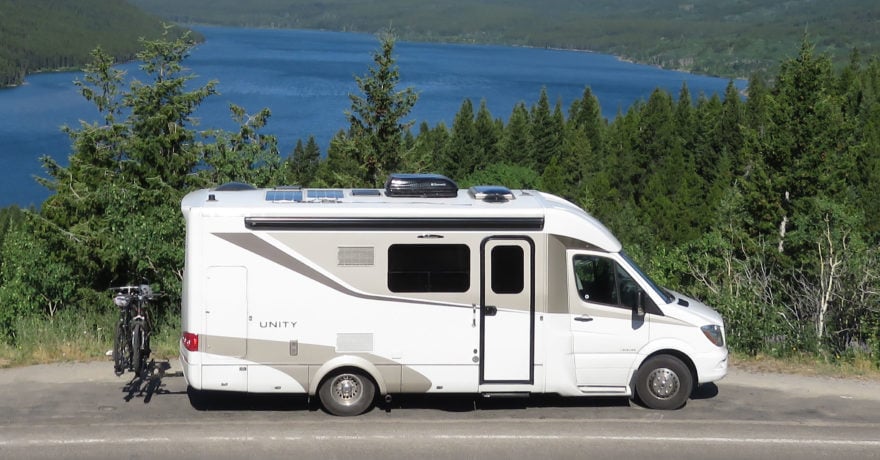
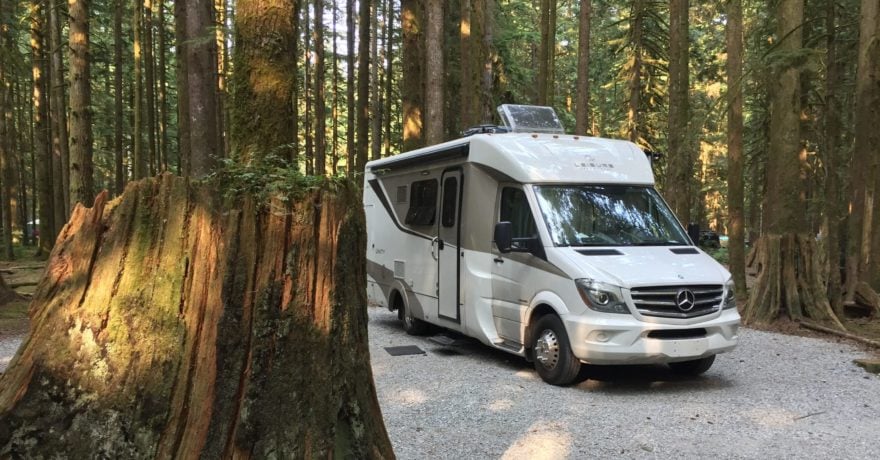
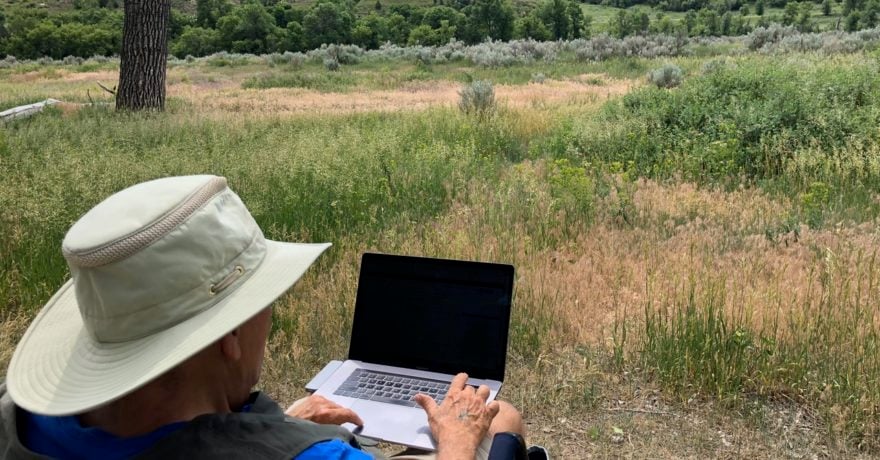
Comments